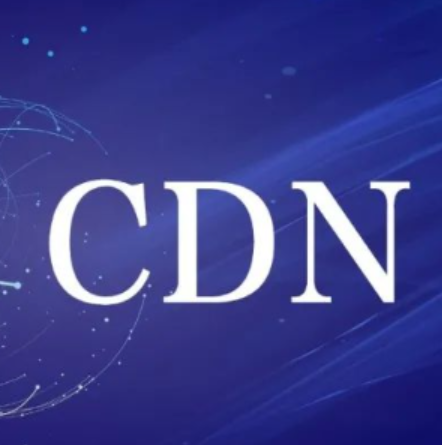The Evolution of CDN: From Static Caching to Dynamic Content Delivery

The internet has evolved dramatically over the last few decades, and with it, the technologies that power it. One such technology that has undergone significant transformation is the Content Delivery Network (CDN). Originally designed to handle the delivery of static content, CDNs have now become critical tools for optimizing both static and dynamic content delivery, improving website performance, and enhancing user experience globally.
In this article, we will explore the evolution of CDN technology, examining its origins, key milestones, and how it has transformed from simple static caching to the complex, dynamic content delivery networks we rely on today.
What is a CDN?
A Content Delivery Network (CDN) is a network of distributed servers strategically located across the globe, designed to deliver content to users with high availability and high performance. CDNs reduce latency by caching content closer to users, so when they request a piece of content (such as a webpage, video, or image), it’s delivered from the nearest server rather than the origin server.
Initially, CDNs were used primarily to cache static content like images, JavaScript, and CSS files, but as the internet evolved, so did the demands for faster, more efficient content delivery.
The Early Days: Static Caching
When CDNs first emerged in the late 1990s, their main purpose was to improve the delivery speed of static content. Static content refers to files that do not change frequently, such as images, videos, and HTML files. These files were stored at edge servers located close to the end users, reducing the distance between the server and the user, which, in turn, minimized latency and sped up load times.
During this phase, CDNs primarily performed caching—storing copies of static resources and serving them to users from the nearest edge server. Popular CDNs such as Akamai and Cloudflare became pioneers in this area, providing a way for websites to scale and deliver content more quickly across regions.
Key Features of Early CDNs:
Static Content Delivery: Caching of static assets like images, stylesheets, and videos.
Reduced Latency: Faster access to content by serving it from a nearby edge server.
Improved Website Performance: Websites experienced faster load times as content was delivered more efficiently.
However, while static caching addressed the need for faster content delivery, it didn’t address the growing need for dynamic content delivery—content that changes based on user interactions, such as personalized data, real-time updates, and dynamic web applications.
The Shift to Dynamic Content Delivery
As websites became more interactive and data-driven, there was a shift in how CDNs were used. The demand for dynamic content delivery grew as web applications started requiring real-time data processing, user-specific content, and personalized experiences. Static caching was no longer enough to meet the needs of modern websites.
In response, CDNs began evolving to handle dynamic content, which is content that changes frequently or is personalized to the individual user. This included things like personalized product recommendations, user profiles, and real-time updates (such as social media feeds or live-streaming data).
How CDNs Began Handling Dynamic Content:
Edge Computing
One of the key developments in the evolution of CDN technology is the rise of edge computing. With edge computing, content is processed and delivered from servers that are physically closer to the user, allowing for the delivery of both static and dynamic content with low latency. By offloading computing tasks to edge servers, CDNs were able to process requests for dynamic content much faster.Dynamic Content Caching
CDNs started caching dynamic content, though not in the same way they handled static content. Using techniques like cache purging, cache invalidation, and TTL (Time to Live) settings, CDNs could ensure that dynamic content was updated frequently and delivered to users in real time without compromising speed.Integration with Cloud Services
As the cloud computing ecosystem grew, CDNs began integrating with cloud services like Amazon Web Services (AWS), Microsoft Azure, and Google Cloud. This integration allowed CDNs to pull dynamic content from cloud servers, further enhancing the speed and efficiency of content delivery.Load Balancing and Real-Time Data
CDNs also integrated load balancing mechanisms that helped distribute user traffic efficiently across multiple servers. Real-time data was dynamically loaded from origin servers or cloud-based databases, enabling websites to provide personalized, up-to-date experiences.Advanced Caching Techniques for Dynamic Content
Techniques like edge caching for dynamic content (where frequently accessed dynamic data is temporarily cached at the edge) and content prefetching (where CDNs anticipate which content will be needed next) improved the delivery of content that was constantly changing. This was particularly useful for websites like news sites, e-commerce platforms, and social media.
Key Features of Modern CDNs:
Dynamic Content Delivery: Serving personalized and real-time content without sacrificing performance.
Edge Computing: Processing data closer to the user for faster content delivery.
Real-Time Data Updates: Providing up-to-date content, such as live events, stock prices, or social media feeds.
Integration with Cloud Providers: Seamless integration with cloud-based databases and services.
The Role of CDNs Today:
Today, CDNs are far more advanced than in their early days. They now handle both static and dynamic content delivery, support live video streaming, enable API delivery, and play a key role in security (with DDoS protection, SSL encryption, etc.).
Some of the most cutting-edge features of modern CDNs include:
Personalization at Scale: CDNs are now capable of delivering personalized content to users without compromising speed, enhancing the user experience.
Support for Mobile Optimization: Mobile-first websites benefit from CDNs’ ability to optimize content for mobile devices, reducing load times and improving performance on mobile networks.
Security Features: CDNs now offer integrated security solutions like DDoS protection, firewalls, and secure SSL/TLS encryption.
Conclusion
The evolution of CDN technology from static caching to dynamic content delivery has been driven by the increasing complexity of websites and the demands of modern internet users. Initially, CDNs were used to deliver static content faster, but as web applications became more interactive and data-driven, CDNs adapted to deliver dynamic, personalized content with low latency.
With innovations like edge computing, real-time caching, and cloud integration, CDNs have become integral to ensuring websites and web applications deliver high performance, scalability, and security. Today, CDNs are not only about optimizing speed—they are crucial for delivering a seamless, personalized, and secure user experience across the globe.

